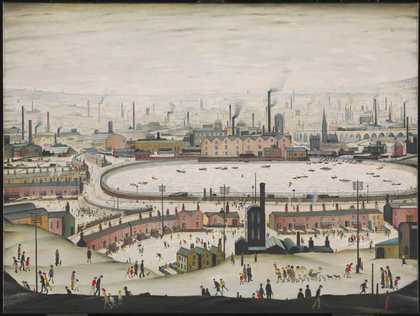Works by artists that refer to labour and recreation in different ways, exploring what it means to make art about modern life
This display brings together artworks from the early twentieth century to the present day that refer to labour and recreation in different ways and explore what it means to make art about modern life. It is concerned with cities and their inhabitants, and the way that work, architecture and technology shape people's lives. The 'trigger work' in this display is The Pond 1950 by the British painter L.S. Lowry, part of the last group of panoramic townscapes that he painted as British industry and working culture was changing. It is an imagined landscape presenting a boating pond with industrial elements familiar from the northern towns surrounding Lowry's home in Lancashire.
Around this work, other artists represent labour conditions, struggles and hopes for possible futures. Cao Fei's video work Whose Utopia? 2006 draws attention to the recreational pursuits of factory workers in contemporary China who have been affected by their country's economic progress. Meanwhile Ghisha Koenig focuses on the everyday experiences of workers in 1950s Britain, when she regularly visited a local factory to research her sculptures of men at work.
In another register, painters working between abstraction and representation relate to the notion of the system and of the imposition of rules. Georges Braque presents everyday objects via the refracted planes of cubism. The cubist method applies analytical systems to visual material, the shifting perspectives of vision and reflecting the experience of modernity. Elsewhere in the display, Robert Delaunay created abstract paintings using bold discs of colour to reflect the rhythm and energy of a modern cityscape.
Tate Liverpool + RIBA North

